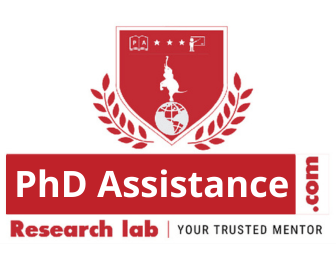Research Proposal Sample Work
Info: 2201 words Sample Research Proposal
Published: 01st JULY 2023
Tagged: Computer Science & IT
A Research Proposal on Futuristic Innovation-Self-Driving Toy Robot Car
Introduction
As a society, we aim to minimize work burdens in whatever way we can, mostly through technology and inventive ideas. A lot of research and development is now targeted toward decreasing human workloads by utilizing Artificial Intelligence and machine learning to educate robots of all kinds to perform jobs that people have traditionally done.
This trend of utilizing robots to replace people is not new; it has been done to some extent since the 1950s (Wysk & Chang, 1997). Using machine learning, such as neural networks, to train software to execute tasks is a novel addition to the challenge, creating more general-purpose machines that require proper software to perform jobs. This expansion has been enabled by increased processing capacity from more sophisticated CPUs and GPUs and more stable distributed computing systems from internet infrastructure, resulting in a position where computer power to train networks is widely available.
The future looks promising for software and data professionals as we develop new and better software to take advantage of machine learning and AI breakthroughs. And ideally, this initiative, in particular, will pique people's curiosity in these subjects, highlighting the vital tools we currently have.
Statement of the Problem
The problem we are attempting to solve is fundamentally one of hardware. As time passes, more computer gear is released into the market, ranging from various smart devices such as televisions and phones to almost any of the 'things' on the titular Internet of Things.
As we view it, the difficulty is determining what we can accomplish with this readily available gear and what unique activities we can repurpose it for. In this scenario, we're looking at utilizing a smartphone as the brain of an autonomous vehicle (a miniature battery-powered automobile), demonstrating that even very inexpensive but widely available hardware can achieve amazing things when combined with the right software.
We also want to demonstrate that specialist hardware is not required to do some of these complex machine-learning tasks, at least for applying the trained neural net. This will be useful as people strive to make technology more publicly available.
Apart from interested academics, the types of individuals interested in this topic include those who may benefit from some intelligent robot use in their lives but have a more limited budget, which means they cannot purchase the more powerful bespoke setups. We may envision organizations like farmers using this to operate a machine to automate agricultural activities (watering, fertilizing) because they already have the machine to execute the job.
Visit our blog for additional information about research proposals Recent research problems and scope for future research proposal topics in big data 2023
Literature Review
A literature review example on the concept of detecting things inside photos using a computer program is not new; people have been interested in this topic since computers began storing images. The technique has witnessed a significant technological shift in recent years, commencing with AlexNet in 2012 (Krizhevsky, Sutskever, & Hinton, 2012). With the advancement of technology, we have witnessed an increase in the usage of convolutional neural networks for image identification applications.
Before entering into the realm of convolutional neural networks and everything that includes, we should look at some of the previous work as a method to better comprehend the present by understanding the past. For the days before the neural net. It is perhaps better to look at the competitors in the previous competition that gave rise to the ImageNet challenge, which witnessed the emergence of convolutional neural networks. The PASCAL VOX Challenge, which lasted from 2005 to 2012, was an earlier challenge. It allowed various object recognition algorithms to compare themselves to one another by providing a dataset to utilize and a compilation of entrants at the end of the event, allowing more people to profit from the work being done.
According to the findings presented (University of Oxford, 2018) from the PASCAL VOX Challenge, recognition is generally done via classification approaches, with the best results coming from various usage of support vector machines as the heart of the solution. Unsurprisingly, additional breakthroughs in object identification led to increasingly powerful kinds of classification, given that neural networks are among the greatest tools for classification, even with their black box character. Overall, the PASCAL VOX Challenge opened the foundation for further interest in this topic, which resulted in the ongoing ImageNet challenge as a successor.
Other approaches to object recognition have been developed, such as clustering algorithms using normal vectors created from planes in an image (Holz, Holzer, Rusu, & Behnke, 2011). Because the normal vectors on a plain should all point in the same direction, you should be able to run a clustering algorithm, locate areas with similar normal vectors, and identify planes in this way. This approach is unique because it does not seek to classify items but only attempts to differentiate them.
A 2009 research proposal help on stereo object tracking (Baguley, 2009) has also resentful my curiosity since it investigates a method to differentiate things (in this case, a cricket ball) from the camera feed and track them using a pair of cameras spaced at a set distance apart, similar to how binocular vision works in humans. While not exactly like our circumstance in that it includes monitoring a specific moving item, their work with distance computation is relevant for our purposes because we are likely to undertake it as well. The fundamental idea behind this PhD Research Proposal is to identify the ground using random sampling consensus and then follow the cricket ball using stereo-depth computations and contour mapping.
Krizhevsky et al. (2012) pioneered using convolutional neural networks in object recognition (Krizhevsky, Sutskever, & Hinton, 2012). The findings were obtained by accessing an extensive dataset to train on, which was not previously available to the public. This was the ImageNet dataset, which contained over 14 million images divided into 22,000 categories, and it allowed them to use deep learning in a convolutional neural network to significantly improve on the best performance in object recognition thus far, with a top-5 error rate of%15.3 compared to the next best of%26.2. The top-5 error rate is the mistake rate for that image's five most likely categories. Therefore, a top-5 error rate of %25 indicates that the image has a top-5 % error rate of 25%. The general status of object identification is complicated, with breakthroughs occurring regularly as various organizations throw a large amount of money and resources into the area. Since we progress in our project, we should watch for advances that may help us better our project since such a thing is not out of the question.
Proposed Methodology
The agile technique was chosen as the SDLC methodology for this project. Agile is a software development style based on iterative development, in which requirements and solutions evolve during the development research design process and are finished in sprints, which are time-limited intervals for each project step. These sprints are finished after the time limit is reached, implying that the project will continue to evolve as each phase goes, with continuous software delivery and continual improvements as each phase proceeds.
Tools
List of tools and services that will be used throughout our Android app and website development.
Android Studio
Android Studio is one of the better IDEs I've used for application development because of its extensive range of functionality. A few of these features include:
- A powerful layout editor - Drag and drop UI components to preview your app on numerous screen configurations.
- Debugging and VM - Easily debug and develop apps on various emulated Android devices and Android versions
- Deep Code Analysis
- A customizable Gradle-based build system
- Instant Run to send changes to your running app without producing a new APK
Visual Studio IDE
Some aspects of Visual Studio that will be very valuable to us:
- Azure Apps enables you to easily create, manage, and deploy cloud-based apps to Azure. One of the reasons we'll be utilizing Visual Studio is that it will make it extremely simple to publish our website to our Azure app services.
- Collaboration - Work efficiently as part of a team.
- Technologies - We may leverage several technologies with Azure that may be quite valuable for our machine learning, engineering & technology and AI development utilizing Visual Studio. (n.d., Visual Studio Development Features)
Microsoft Office 365
Office 356 will be utilized to execute various activities during our project. Some of these activities will include any documentation created in Word, any presentations created in PowerPoint, and the creation of our Gantt Chart in Microsoft Project.
Microsoft Azure
The Azure Cloud Services that we expect we will need to employ for app and website development.
- Windows Virtual Machine - Creating an RTMP/RTSP Server from which we can broadcast from our app necessitates creating a VM to implement the necessary resources for streaming.
- App Service - Allows us to publish our website to be viewed from anywhere and used to operate our robot.
- Azure SQL Database - We may need a SQL Database for specific tasks needing data storage. n.d. (Azure Cloud Services)
Anaconda Python
Anaconda is a free, open-source Python and R computer language distribution for data science and machine learning applications.
Google TensorFlow
TensorFlow is a high-performance numerical computing software library. Its adaptable design enables simple computing deployment over various platforms (CPUs, GPUs, TPUs), from PCs to clusters of servers to mobile and edge devices. It has significant machine learning and deep learning support, and the flexible numerical computing core is employed in many other scientific disciplines. n.d. (About TensorFlow)
Time Constraints
We have eight weeks to complete our fully functioning autonomous controlled robot using a smartphone as the brain, which will be challenging to get everything packed and working as planned within the period we do believe we will be set and our team and time management for this project will be managed correctly and effectively. We meet in person twice a week and communicate about our progress and what's going on with our project frequently online. We've made a Gantt chart that outlines the tasks we've planned and the starting and ending times so we know what has to be done and when. However, due to time restrictions, we may face some unexpected issues that may affect the entire project, and we will do our very best to ensure we are on track with our project.
Conclusion
After conducting all the preliminary research & understanding the importance of research proposal, we conclude that our proposal plan is of relative uniqueness. As we progress through this project, we will better understand the feasibility of our objectives and, ideally, will be able to plan around any obstacles that arise. The technical difficulty of this project and its proximity to an area of significant interest in today's society (self-driving cars) will ideally keep the reader fascinated with the conclusion and our hopes for success with our goals.
Check out our study guide for additional details on PhD Research Proposal Guidelines
References
Agile software development. (2018, October 23). Retrieved from https://en.wikipedia.org/wiki/Agile_software_development
Trapani, K. (2018, September 26). What is Agile/Scrum. Retrieved from https://www.cprime.com/resources/what-is-agile-what-is-scrum/
12 Principles Behind the Agile Manifesto. (2017, November 15). Retrieved from https://www.agilealliance.org/agile101/12-principles-behind-the-agile-manifesto/
A Beginners Guide to Understanding the Agile Method. (2018, October 15). Retrieved from https://linchpinseo.com/the-agile-method/
Android Studio features | Android Developers. (n.d.). Retrieved from https://developer.android.com/studio/features/
Visual Studio IDE. (n.d.). Retrieved from https://visualstudio.microsoft.com/vs/
Visual Studio Development Features. (n.d.). Retrieved from https://visualstudio.microsoft.com/vs/features/
Azure products. (n.d.). Retrieved from https://azure.microsoft.com/en-us/services/
Your vision. Your cloud. (n.d.). Retrieved from https://azure.microsoft.com/en-us/
Project risk management. (2018, May 05). Retrieved from https://en.wikipedia.org/wiki/Project_risk_management n.d.). Retrieved from http://projectmanager.com.au/best-practice-risk-management-for-it-projects/
Artificial neural network. (2018, October 13). Retrieved from https://en.wikipedia.org/wiki/Artificial_neural_network
N., & A., M. (1970, January 01). Neural Networks and Deep Learning. Retrieved from http://neuralnetworksanddeeplearning.com/
About TensorFLow. (n.d.). Retrieved from TensorFlow: https://www.tensorflow.org/
Anaconda. (n.d.). Retrieved from Anaconda: https://www.anaconda.com/
Android Studio. (n.d.). Retrieved from Android: https://developer.android.com/studio/
ARCHOS Drone Remote. (2017, February 23). Retrieved from Google: https://play.google.com/store/apps/details?id=com.udirc.archosdroneremote
Azure Cloud Services. (n.d.). Retrieved from Microsoft: https://azure.microsoft.com/en-us/services/
Baguley, G. (2009). Stereo Tracking of Objects with respect to a Ground Plane. Christchurch: University of Canterbury.
Bojarski, M., Testa, D. D., Dworakowski, D., Firner, B., Flepp, B., Goyal, P., . . . Zieba, K. (2016). End to End Learning for Self-Driving Cars. Ithaca: Cornell University Library.
Holz, D., Holzer, S., Rusu, R. B., & Behnke, S. (2011). Real-Time Plane Segmentation Using RGB-D Cameras. RoboCup 2011: RoboCup 2011: Robot Soccer World Cup XV (pp. 306-317). Heidelberg: Springer.
Howard, A. G., Zhu, M., Chen, B., Kalenichenko, D., Wang, W., Weyand, T., . . . Adam, H. (2017). MobileNets: Efficient Convolutional Neural Networks for Mobile Vision. Ithaca: Cornell University Library.
Meet Android Studio. (n.d.). Retrieved from Android: https://developer.android.com/studio/intro/
Microsoft Azure. (n.d.). Retrieved from Microsoft: https://azure.microsoft.com/en-us/
NXT Remote Control. (2013, August 26). Retrieved from Google: https://play.google.com/store/apps/details?id=org.jfedor.nxtremotecontrol
Office 365. (n.d.). Retrieved from Office: https://www.office.com/




